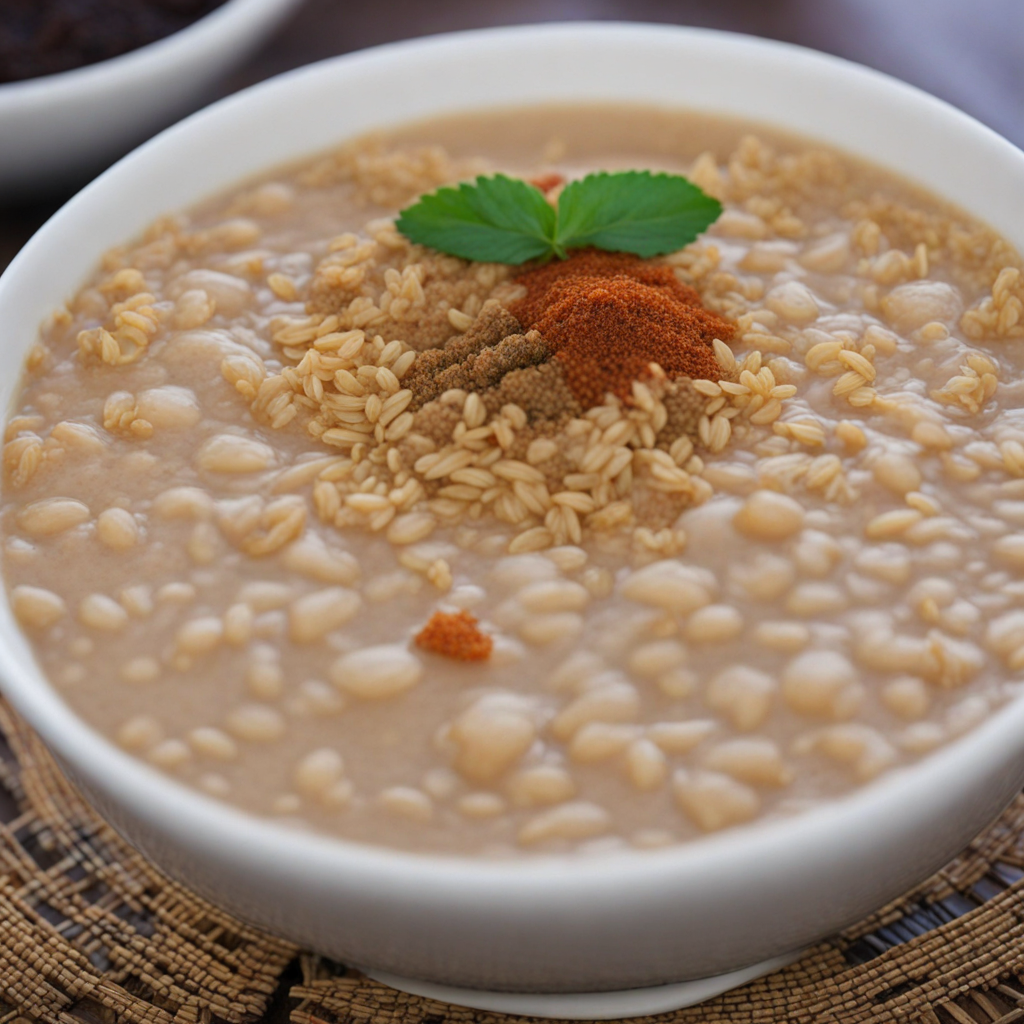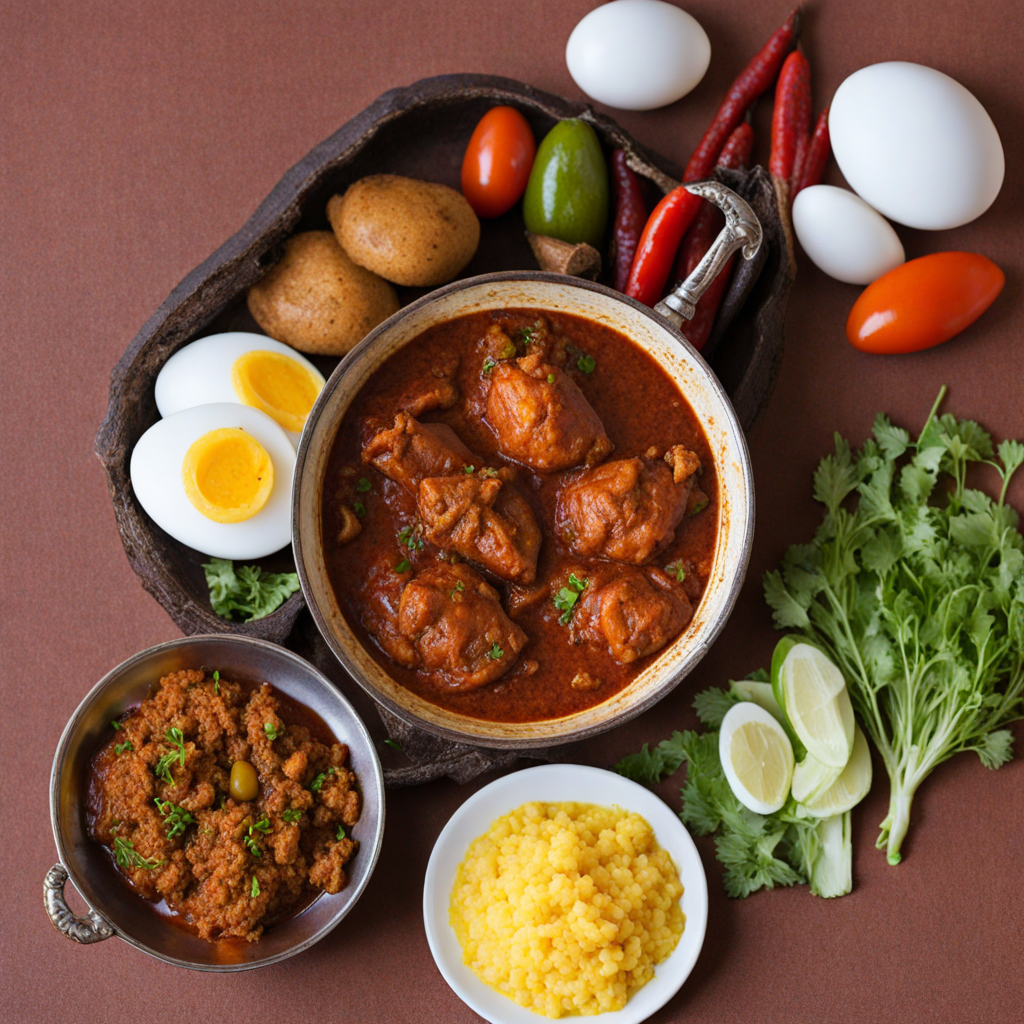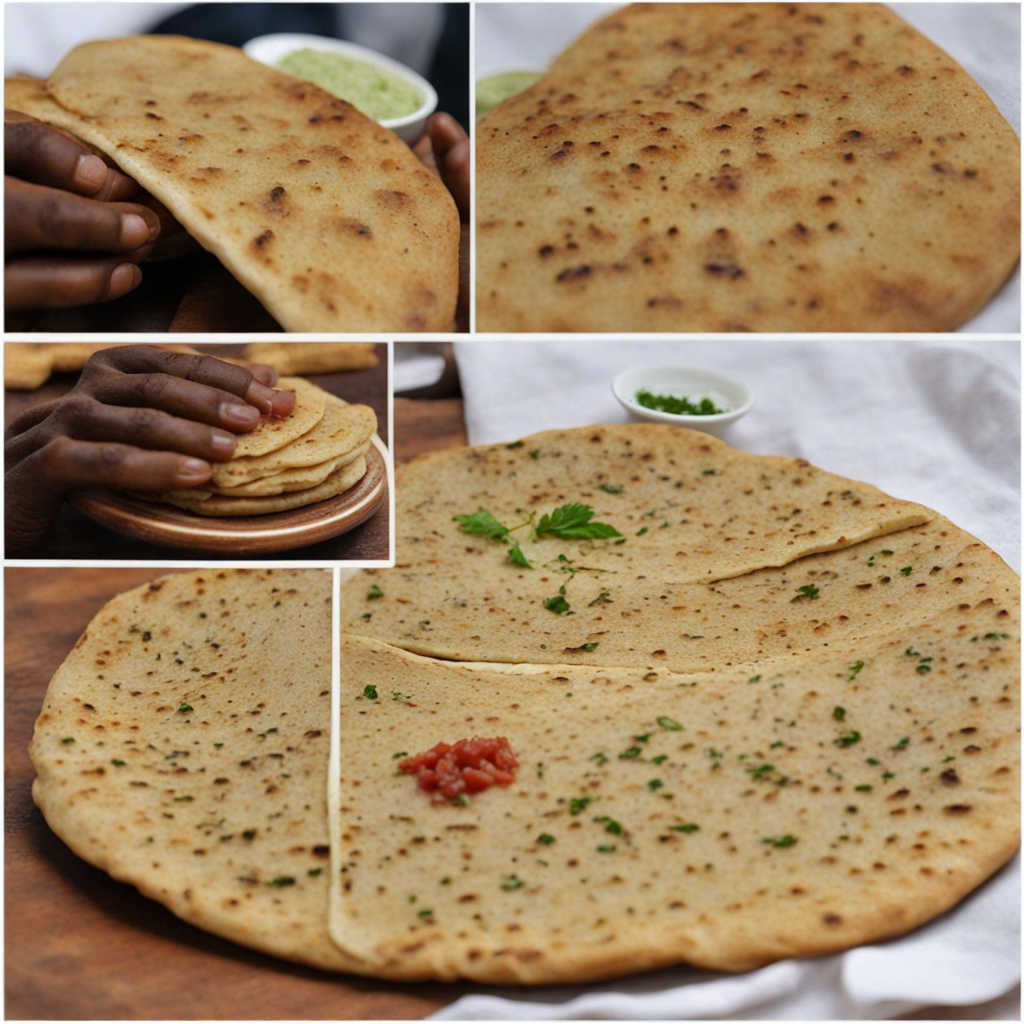Dulet
Dulet is a traditional Ethiopian dish that embodies the rich culinary heritage of the country. This flavorful delicacy is primarily made from minced or finely chopped organ meats, typically including liver, tripe, and heart, which are seasoned with a variety of spices. The combination of spices often includes mitmita, a spicy blend of ground chili pepper, cardamom, and salt, which gives Dulet its distinctive kick. The dish is usually served warm, allowing the robust flavors of the meat and spices to meld together beautifully, creating a comforting and hearty experience for the palate. What sets Dulet apart is not only its unique flavor profile but also its texture. The organs are prepared to retain a tender and succulent bite, providing a contrast to the aromatic spices that envelop the dish. Often accompanied by a side of injera, a sourdough flatbread, Dulet encourages diners to scoop the meat with the injera, enhancing the communal aspect of Ethiopian dining. The dish is a celebration of bold flavors and textures, making it an exciting choice for those looking to explore the depths of Ethiopian cuisine. Dulet is often enjoyed during special occasions and gatherings, making it a dish that brings people together. The preparation of Dulet requires skill and knowledge of spices, reflecting the cultural significance of food in Ethiopian society. For those seeking a new culinary adventure, Dulet offers a tantalizing glimpse into the heart of Ethiopia's food culture, inviting you to savor the rich flavors and traditions that have been passed down through generations.
How It Became This Dish
The History of ዱለት (Dulet) from Ethiopia #### Origins Dulet (ዱለት) is a traditional Ethiopian dish that embodies the rich culinary heritage of the country, particularly among the Oromo and Amhara ethnic groups. This dish is a savory mixture primarily made from minced meat, usually beef or lamb, and is often complemented with various spices, vegetables, and sometimes even offal. The name "dulet" is derived from the Arabic word "دليل" (dalil), meaning "to guide," which may reflect the dish's function as a staple that guides the culinary practices and social gatherings of the Ethiopian people. Historically, dulet is believed to have emerged in the highlands of Ethiopia, where pastoralist communities utilized the abundant livestock to create this protein-rich dish. The tradition of consuming dulet dates back centuries, with roots deeply embedded in the nomadic lifestyles of the pastoralists. The dish's preparation is often associated with significant social occasions, such as weddings, holidays, and large family gatherings, marking it as more than just a meal—it's a symbol of hospitality and community. #### Cultural Significance Dulet holds a special place in Ethiopian culture, reflecting the country’s diverse ethnic makeup and culinary practices. The dish is not merely a source of sustenance; it represents a connection to heritage, family, and tradition. In Ethiopian society, food is often at the center of social interactions; thus, the preparation and sharing of dulet form an integral part of communal life. In many Ethiopian households, making dulet is a communal activity. Family members come together to prepare the dish, which often involves intricate steps such as finely chopping the meat, seasoning it with a blend of spices, and sometimes including ingredients like liver and tripe. The act of cooking dulet is a ritual that fosters bonding and reinforces familial ties, highlighting the importance of food in cultural expression. Moreover, dulet is often served with traditional Ethiopian bread, such as injera—a sourdough flatbread made from teff flour. Injera is not only a staple accompaniment but also serves as the utensil for scooping up the meat mixture. This practice underscores the communal nature of eating in Ethiopia, where sharing food is synonymous with sharing time and experiences. #### Development Over Time As Ethiopia underwent significant changes over the centuries, the preparation and presentation of dulet evolved while retaining its core elements. The influences of various empires and trade routes, particularly during the time of the Aksumite Empire and later the Ethiopian Empire, introduced new spices and cooking techniques that enriched the flavors and complexity of the dish. For instance, the incorporation of berbere—a spice blend made from chili peppers, garlic, ginger, and other spices—added a distinctive heat and depth to dulet. The advent of globalization in the late 20th and early 21st centuries further impacted the dish. With the influx of diverse culinary influences, chefs began experimenting with dulet, incorporating modern cooking techniques and presentations. This evolution has led to innovative variations of the dish, including vegetarian versions that utilize lentils or chickpeas, catering to a broader audience and reflecting contemporary dietary preferences. In urban areas, where traditional cooking methods might be less feasible, dulet has found its way into restaurants and eateries, becoming a popular choice among locals and tourists alike. This commercialization of dulet has introduced it to a global audience, allowing for cultural exchange and appreciation of Ethiopian cuisine. #### Modern Interpretations and Global Recognition In recent years, dulet has gained recognition beyond Ethiopia's borders, partly due to the growing interest in African and specifically Ethiopian cuisine worldwide. This increased visibility has led to culinary enthusiasts and chefs incorporating dulet into fusion dishes, blending traditional Ethiopian flavors with international culinary techniques. For example, dulet may be found in gourmet restaurants served as a filling for tacos or as a topping for gourmet pizzas, showcasing its versatility while honoring its origins. The rise of Ethiopian restaurants in major cities around the world has also contributed to the popularity of dulet. These establishments often highlight the dish as a must-try item, inviting diners to experience the authentic flavors and communal aspects of Ethiopian dining. As a result, dulet has become a symbol of cultural pride, representing Ethiopia's rich culinary history and the resilience of its food traditions in the face of modernity. #### Conclusion Dulet is more than just a dish; it is a narrative woven into the fabric of Ethiopian culture, encapsulating history, tradition, and community. Its origins in pastoralist practices, its significance in social gatherings, and its evolution in the global culinary landscape reflect the adaptability and enduring appeal of Ethiopian cuisine. As Ethiopia continues to navigate the complexities of modern life while honoring its past, dulet serves as a reminder of the importance of food as a vessel for cultural identity. Whether enjoyed in a traditional setting with family and friends or in a contemporary restaurant far from its homeland, dulet remains a testament to the richness of Ethiopian heritage, inviting all to partake in its flavorful story.
You may like
Discover local flavors from Ethiopia







